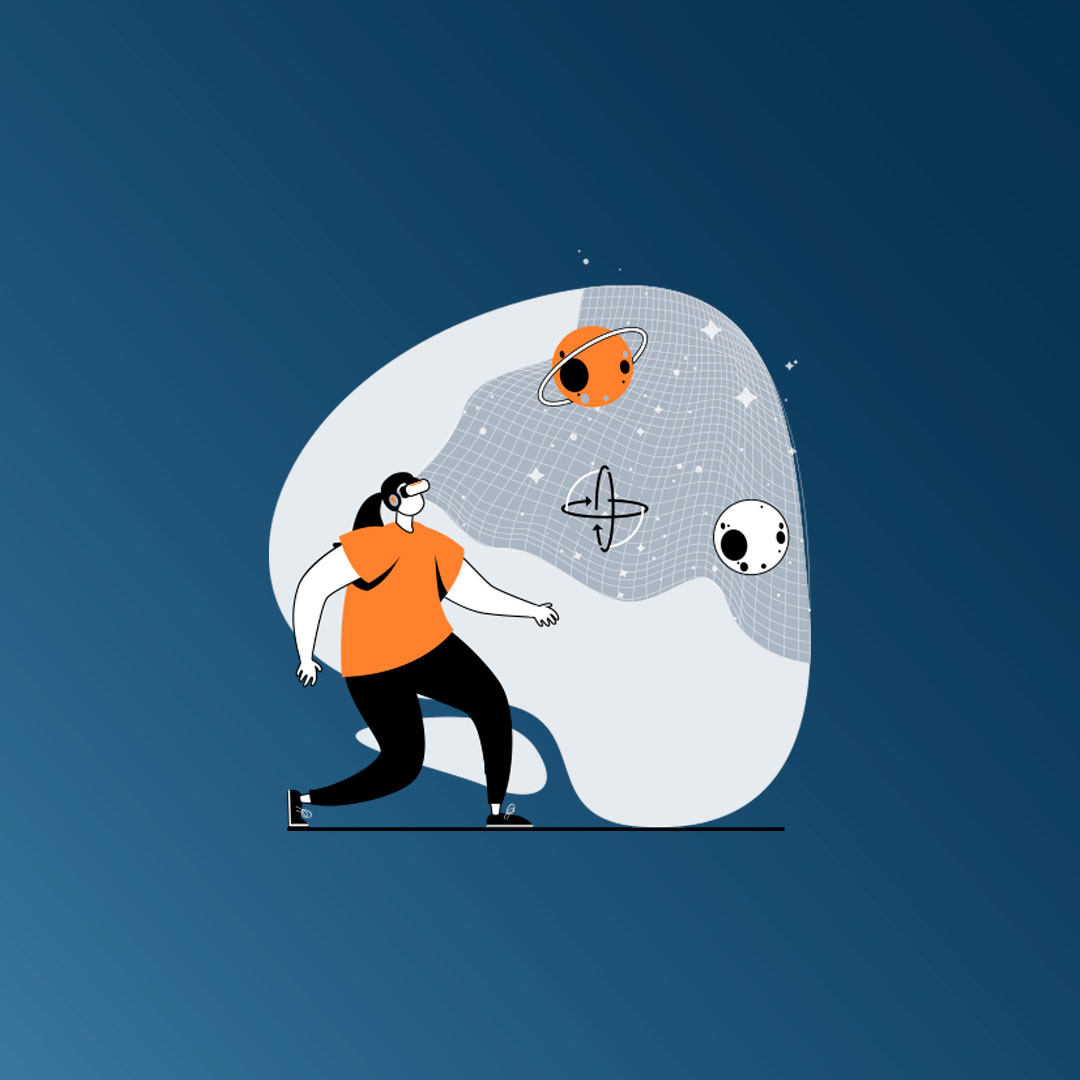Filters using Augmented Reality (AR) allow camera images to be overlaid with generated 2D or 3D graphics and animations in real time. AR Filters are gaining popularity, becoming part of the marketing strategies of the most renowned companies around the world.
AR is a great way to make people feel like they are part of a story. It can be used to create a fun and engaging experience that gives users the feeling that they are in an alternate reality. AR also helps you build your brand and reach your audience by showing off the features of your product or service in an effective way.
- 4x longer watch time than videos
- 70% better memorability comparing to the traditional Ad formats
- 75 seconds of average user engagement
Augmented Reality is a powerful tool to connect with your audience.
You can use AR to create a sense of belonging and community, which will help your audience feel closer to you and your brand. For example, by making it easy for customers to share their favorite moments through social media, you can bring them into the heart of the activity at any time.
AR Filters are a great tool to create User Generated Content. An interesting filter format, combined with appropriate communication, maximises the likelihood that users themselves will want to share images and videos using them with friends, which can lead to rapid, organic spread of content.
Benefits of AR Marketing
- Increased engagement: AR marketing allows customers to interact with products in a more engaging way, which can increase their interest in the product and likelihood of purchase.
- Improved customer experience: AR can be used to enhance the customer experience by providing additional information about products, such as product specifications and user reviews.
- Increased brand awareness: AR marketing can help increase brand awareness by making products more visible and memorable to consumers.
- Measurable results: AR marketing can provide measurable results in terms of increased engagement, conversion rates and sales, allowing companies to track the effectiveness of their campaigns.
Offer a useful experience with branded AR Filters
Implementing augmented reality for your customers to enjoy is one of the best ways to enhance their experience with your brand. This will help make them more likely to engage with you again in the future and tell their friends about how great it was! There are many ways you can use AR as part of this effort:
Instagram AR Filters
AR filters on Instagram can be used in Stories, Reels, Video Calls and Meta Ads. Once implemented, they appear in a dedicated tab on the brand’s profile and in the effects gallery, but we can also use them through a direct link and any Stories or Reels using them.
In Meta Ads, we can both promote a previously created effect and deploy a dedicated filter just for a paid campaign. The effect is then visible in the Ads manager and, when published, includes the call to action “Try in Camera” and opens in the Story camera on Instagram or Facebook.
AR technology on Instagram offers us a range of possibilities and many formats that we can use when creating a filter. Among others, we can create Filters for the Face (Face Tracking), Filters that place elements in real space (Plane Tracking + LIDAR), placing elements after detecting graphics (Target Tracking) or mapping graphics to hands (Hand Tracking).
Before publication, each filter must undergo approval, during which compliance with the technical and content requirements of the
and content requirements of Meta. The most significant substantive restrictions include the ban on the publication of AR filters by alcohol brands, effects promoting drugs and other medical devices, or the ban on the depiction of weapons, knives and other dangerous tools on filters.
Snapchat AR Filters
Snapchat is a great platform for augmented reality. It has a large and engaged user base, which makes it an obvious choice for brands looking to experiment with the technology. Its lenses are fun and easy to use, meaning that the user experience is seamless and enjoyable for both brands and their audiences.
In addition to being engaging and intuitive, Snapchat’s Lenses can also help deliver a strong message in just a few seconds. When paired with other forms of content (such as text or video), AR lenses can be used to tell stories more effectively than words alone would allow—and they might even get consumers talking about your brand long after they’ve viewed it on their phones!
TikTok AR Filters
The AR filters on TikTok can be divided into two groups:
Branded Effects and Community Effects. From the user’s perspective, this division does not really matter; their functionalities may be identical, however, marketers planning activities on the platform should be aware of the possibilities and limitations of each.
Branded effects are one of the formats available in paid advertising on TikTok. These filters are only available during the campaign and disappear when the campaign ends. They can be used with other ad formats like the hashtag challenge etc. The user can find them next to each video that uses them and on the dedicated effect page.
Community effects, on the other hand, are available in a special tab on the brand’s profile and can be used indefinitely. They are a great tool to build long-term engagement and community relationships on the platform. They can be used directly from the brand profile and from any video that uses them. Videos using Community AR filters might be use in Paid TikTok Spark Ads, promoting videos from brand’s profile or creators accounts (With their permission).
Web-based AR Filters
WebAR is an Augmented Reality experience that can be accessed in a web browser and does not require the installation of any additional application. There are no restrictions in terms of content or file weight. Alcohol brands or drug and cigarette manufacturers can use WebAR without limits. This solution also gives us the greatest possibilities when it comes to creations and the use of advanced technological solutions. We can create virtually anything, from face filters to virtual fittings and AR games using geo targeting.
WebAR is great not only for advertising campaigns, but also for ecommerce or email marketing, where it allows, among other things, the visualisation of products in real space and the personalisation of the user experience.
For the user, using WebAR is as easy as visiting a website. Simply type in the URL, scan the QR code or click on the link to open the default web browser with AR experience.
How do we create an AR Filter to be used by our target group?
Even the most advanced filter, without the right communication, will not be used by our audience. The key to success once the effect has been published, is to plan the right communication that informs the audience about the AR filter and then motivates them to use it. Ideally, our filter solves a problem for the target group or gives them some value they want to seek. It might be a competition, a giveaway, or access to unique content only available in AR. Influencers are also great at promoting filters, as they can show the effect to a wider audience and encourage their audience to use it.
AR Filters are no longer a funny extras
This innovative technology holds promise in increasing customer engagement, enhancing customer experience, building brand recognition, and delivering measurable marketing outcomes. In the dynamic digital landscape, every brand is constantly looking for the ‘next big thing’ to stand out. Combining AR technology with clever strategic planning, could very well prove to be the game changer, bringing an unparalleled level of customer experience and brand engagement. The future of AR in marketing is not only bright but also holds potential we’ve only begun to imagine.



